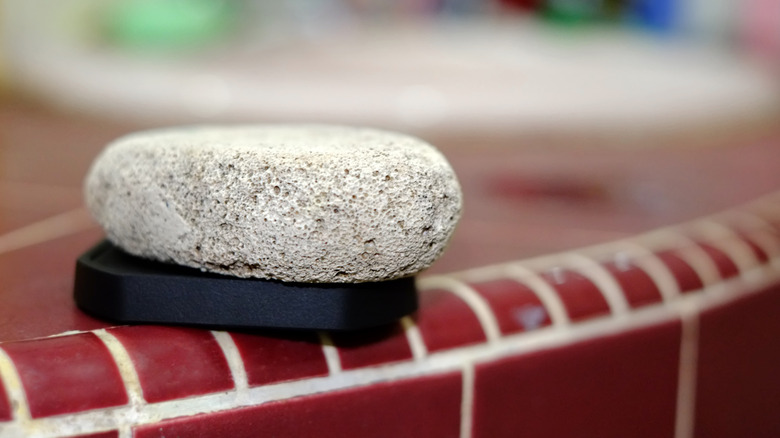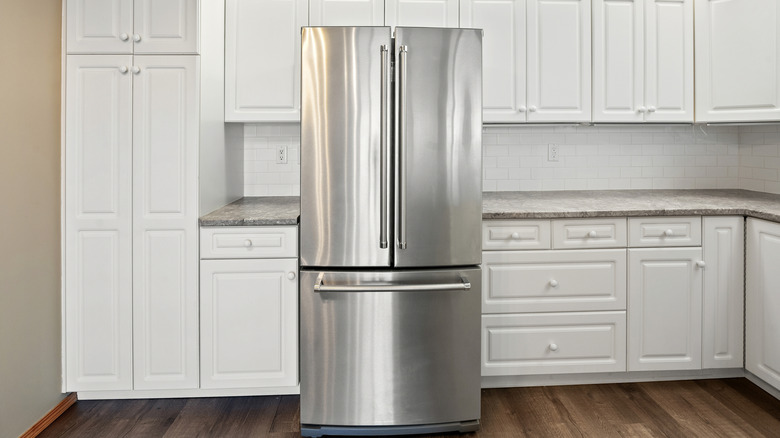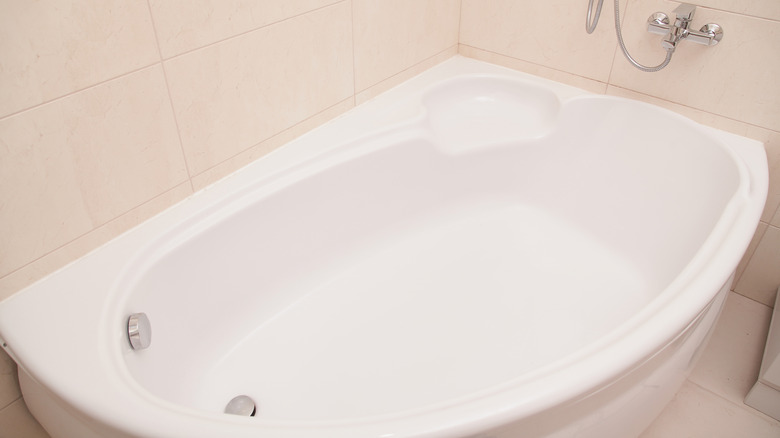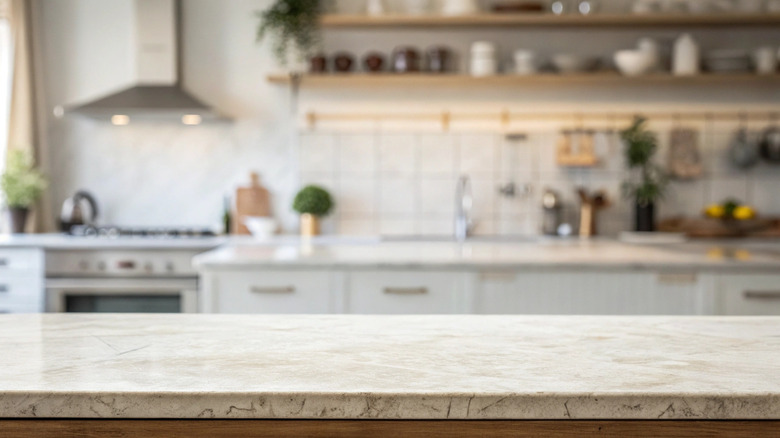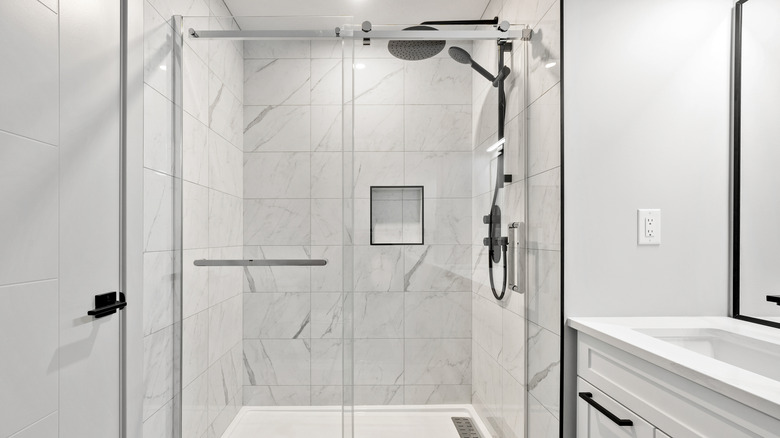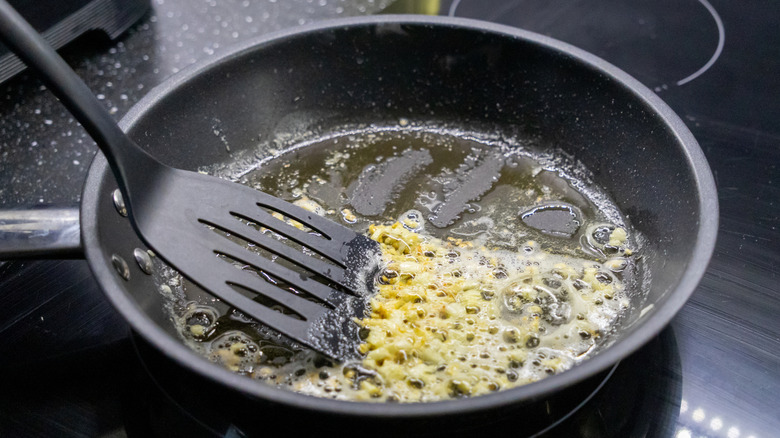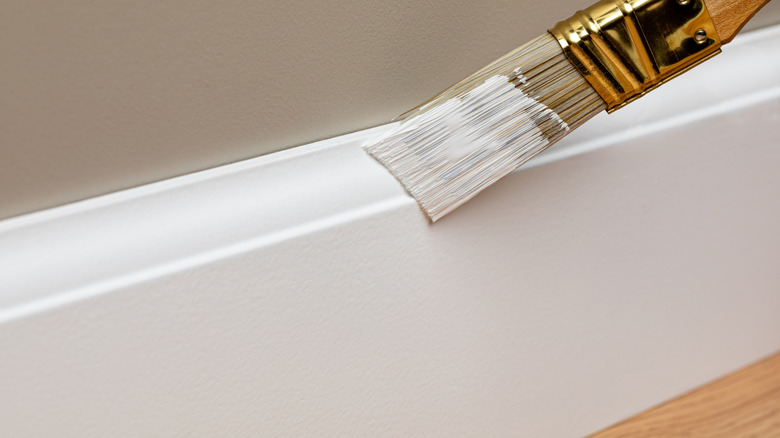6 Spots You Should Never Clean With A Pumice Stone
We may receive a commission on purchases made from links.
Pumice stones are often praised for their top-notch cleaning abilities — and that doesn't just apply to your feet. This natural stone is actually a sort of volcanic rock that is created from cooled lava. Thanks to their abrasive texture, pumice stones are also a popular tool for household cleaning — especially for surfaces that could use a good scrubbing. However, for all of the things pumice is great at cleaning, there are also some ares and items that can't withstand the rough nature of the stone.
Using a pumice stone to clean certain areas can potentially lead to two things no homeowner wants: irreversible damage and maybe even costly repairs or replacements. As a result, it's important to know what kinds of surfaces aren't pumice stone friendly so you can have peace of mind when cleaning your home. Let's take a look at six spots you should never clean with a pumice stone.
Stainless steel appliances
If you're dealing with dirt and/or debris on your stainless steel appliances, you may be tempted to reach for a pumice stone and start cleaning. However, that isn't the best idea. Since pumice stone is abrasive, rubbing it on stainless steel can cause permanent scratches on your appliances. It's also important to note that in addition to avoiding pumice stones, you'll want to avoid using anything abrasive to clean stainless steel, including steel wool and scouring cleaning powders.
While a pumice stone may not be the best option for your stainless steel appliances, there are other cleaning methods that can get the job done quickly, effectively, and without causing any damage. Experts suggest making your own cleaning solution using water and dish soap (or vinegar). You can then spray the solution onto your appliance and wipe it down with a damp microfiber cloth. It's important to wipe with the grain to prevent streaking. Once you've wiped your appliance down, you can use a dry microfiber cloth or paper towel to remove any excess cleaning solution.
Fiberglass, plastic, or acrylic bathtubs
Cleaning a bathtub typically requires a good scrub down, so it may seem like a pumice stone is the perfect tool for the job. In reality, however, if your tub is made of fiberglass, plastic, or acrylic, pumice stones should be avoided. As with stainless steel, pumice stones' abrasive texture can scratch these materials, as all of them are softer than pumice.
Instead of a pumice stone, you can spray your bathtub with a cleaning solution and use a cloth or a brush to wipe it out. Some people may prefer to use store-bought cleaners, such as Scrubbing Bubbles, while others may opt for more natural cleaning solutions you can DIY. If you want to take the natural route, you can make your own solution by mixing water, baking soda, and dish soap until it creates a paste-like substance. Leave the paste on for a few minutes, then scrub with a soft brush or cloth, then wipe clean. Keep in mind, however, that if your bathtub is made of porcelain, a pumice stone is a great option.
Stone countertops
From quartz to granite, stone countertops are the most popular choice for homeowners in the United States. Although stone countertops are known for their durability, cleaning them with a pumice stone isn't recommended. Pumice stones can damage your precious countertops by scratching them and ruining the seal, which can negatively impact their appearance, as well as make them more susceptible to future damage. In addition to avoiding pumice stone, it's also a good idea to stay away from any cleaners that contain a lot of acid. Some stones, such as granite and marble, contain calcite, which, when introduced to acid, causes a dissolving reaction that also degrades the stone.
Although using a pumice stone may be out of the question for your countertops, you can easily clean them with a mild cleaning solution and a little elbow grease. To make your own solution, mix mild dish soap and warm water in a spray bottle, spritz it over your countertops, and wipe them down with a clean rag. If mixing your own solution isn't your thing, you can use cleaning products specifically made for stone, like the Zep 2-in-1 Marble, Granite, and Stone Cleaner.
Glass shower doors
Glass shower doors are beautiful when they're clean, but when they're covered in soap scum and hard water stains, they can turn into somewhat of an eyesore. Although pumice stones can be used on some glass surfaces, such as your glass stove top to have it look sparkling new, it's not recommended for shower doors due to how they're treated/coated. Using a pumice stone on your glass shower doors could cause unsightly scratches, especially if your shower doors are frosted.
To effectively clean your glass shower doors, you can use a product made specifically for this purpose, like Rain-X Shower Door Cleaner, or you can mix equal parts distilled white vinegar and dish soap in a spray bottle. If you choose the DIY cleaning solution option, you'll want to spray your shower door with your mixture and let it sit for 10 to 15 minutes. Then, the glass can be scrubbed with something non-abrasive, such as a rag or a sponge. If you're looking for another method, you can also clean your shower doors with Pine-Sol, though it needs to be diluted.
Non-stick cookware
Despite having a non-stick surface, grease and food residue can still find themselves clinging to nonstick cookware. Scratching away at the surface of your beloved non-stick pots and pans may seem like the quickest and easiest fix, but using anything abrasive, including a pumice stone, could actually lead to damage. Scrubbing non-stick cookware with something rough can damage the coating. Even though scratched coating may not seem like a big deal, the reality is that it can actually be harmful. A 2022 study published in Science of the Total Environment found that scratched Teflon cookware could result in over two million nano and microplastics being released.
Instead of risking damaging your cookware and potentially putting your health at risk, non-stick cookware should be cleaned with mild dish soap, warm water, and a sponge. To remove stubborn residue, let the pan soak in warm water and soap for around 15 to 30 minutes, and gently scrub the surface with a soft-bristle brush. It's important to remember to let your pan cool off completely before cleaning.
Painted surfaces
Painted surfaces in your home, like walls and baseboards, can accumulate dust and dirt from dealing with the wear and tear of everyday life. It can be tempting to scrub these surfaces as hard as possible to return them to their former glory, but you definitely don't want to use a pumice stone to do it. Pumice will easily scratch any painted surface and could potentially even damage the material underneath, particularly if the painted surface is wood.
When cleaning interior walls and other painted surfaces, experts recommend simply using warm water and mild soap with a soft rag or sponge. Once you've washed the area, you can wipe it down with a damp rag. Be mindful that the rag isn't too wet, as too much water could damage your paint as well. It's also important to remember that freshly painted surfaces shouldn't be washed. Paint should be allowed to dry for about two weeks so that it can fully cure before getting the area wet.
